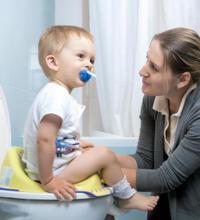Getting Help Near You with a Partial Hospitalization Program

Dr. Loren Cubero is an addiction psychiatrist practicing in Fair Lawn, New Jersey. Dr. Cubero evaluates, diagnoses, and treats people who suffer from impulse control conditions related to addiction. As an addiction psychiatrist, Dr. Cubero is a substance abuse expert, and is trained to fully understand the biological science... more
It’s not easy to admit when you need help. But what if the support you’re looking for is closer, more flexible, and more empowering than you expected?
If you’re living in California and feel stuck between needing intensive support but not quite a full-time inpatient program, a Partial Hospitalization Program (PHP) might be the middle ground you’ve been searching for. It gives you the structure of rehab without completely stepping away from your life.
Let’s walk through what PHP is really like, why it works, and how to find one near you that fits your needs.
What a Partial Hospitalization Program Really Looks Like
PHP is often misunderstood, so let’s clear it up. It’s not about being hospitalized. You don’t sleep at a facility. Instead, you attend structured treatment during the day—usually 5 to 6 hours for 5 to 7 days a week—and then return home at night.
This makes it a solid option for those who:
- Need more care than outpatient therapy offers
- Don’t require 24/7 supervision
- Want to maintain a level of independence while still focusing on recovery
Whether you're recovering from substance use or managing mental health challenges, PHP creates a bridge between intensive care and real-life responsibilities. It's immersive without being isolating.
“Recovery is hard. Regret is harder.” — Brittany Burgunder
Why Location Matters When Choosing a PHP
Being able to attend treatment close to home is more important than most people realize.
Choosing a PHP in California—near your work, school, or family—makes it easier to stay consistent, and consistency is key in recovery. You’re more likely to follow through when it doesn’t feel like a logistical headache every single day.
Plus, local programs allow your support system to be part of the process. Family involvement, when appropriate, has been shown to improve recovery outcomes significantly.
If you're wondering how to take that first step, this step-by-step guide to enroll in a partial hospitalization program near you walks you through the process clearly and gently.
What to Expect During a Typical Day in PHP
Let’s break it down. A day in a Partial Hospitalization Program is structured to support every layer of your recovery. You’ll usually experience a combination of:
- Group therapy sessions focused on skills, coping, and community
- One-on-one counseling to dive into deeper personal work
- Medication management if part of your treatment plan
- Educational workshops on relapse prevention, stress, and healthy living
- Mindfulness or creative activities like yoga, journaling, or art therapy
Each day is designed with purpose—helping you stabilize, build self-awareness, and prepare for long-term recovery.
The Benefits of Staying Connected to Real Life
One of the most empowering parts of PHP is this: you still get to go home.
That might sound small, but it’s huge. It lets you apply what you're learning in real-time, in your real environment. You’ll start noticing triggers, building boundaries, and discovering what works outside of therapy rooms.
Here are just a few things people appreciate about PHP:
- You stay close to your home and loved ones
- You can gradually rebuild routines and responsibilities
- You learn to manage recovery while navigating life, not in isolation
- You get support and independence
This balance can make long-term recovery more sustainable, especially when paired with community support and aftercare.
How PHP Compares to Other Treatment Options
If you're deciding between treatment types, it helps to understand how each one fits into the recovery journey. Here's how PHP stacks up against the most common options:
Inpatient or Residential Treatment
- Intensity: High
- Living Situation: You stay full-time at a treatment facility
- Best For: People experiencing severe addiction or a mental health crisis who need 24/7 supervision and a controlled environment
Partial Hospitalization Program (PHP)
- Intensity: Moderate to high
- Living Situation: You live at home and attend treatment during the day
- Best For: Those who need structured, intensive care but are stable enough to return home each night
Intensive Outpatient Program (IOP)
- Intensity: Moderate
- Living Situation: You continue to live at home while attending treatment for fewer hours than PHP
- Best For: Individuals stepping down from PHP or managing mild to moderate symptoms while balancing work or school
Outpatient Therapy
- Intensity: Low
- Living Situation: Fully at home with occasional therapy appointments
- Best For: Ongoing emotional support, relapse prevention, or mental health maintenance
A well-designed PHP in California can feel like a lifeline—especially for those in that in-between space: not needing round-the-clock supervision, but still requiring more than just weekly therapy. It's structured enough to create real progress while still allowing you to stay connected to your daily life.
Tips for Finding the Right Program Near You
If you’re starting your search, here are a few key things to look for:
Accreditation and Licensing
Make sure the facility is licensed by the state of California and follows clinical best practices. You can check program legitimacy through SAMHSA, a federal resource offering treatment directories and helpful information.
Tailored Treatment Plans
The best PHPs personalize care. You want more than cookie-cutter sessions—you need a plan that adapts as you grow.
Support for Co-occurring Disorders
If you’re facing both substance use and mental health concerns, make sure the program addresses dual diagnosis treatment.
Compassionate, Skilled Staff
Read reviews, ask questions, and talk to former clients if possible. A supportive environment with experienced staff makes all the difference.
Ready to Start Where You Are
Here’s the truth—you don’t have to wait until things get worse to get help.
Finding a Partial Hospitalization Program near you in California can be the first bold step toward healing. It’s structured but flexible. Intensive but supportive. And most of all, it meets you where you are.
Final Thoughts
Recovery doesn't always look like full-time rehab. Sometimes it looks like showing up daily, doing the hard work, and heading home to rest and reflect.
A local Partial Hospitalization Program gives you that balance—structure and freedom, support and independence. And most importantly, it reminds you that healing doesn’t have to mean disappearing from your life.
You can start right here. Right now. And you don’t have to do it alone.









